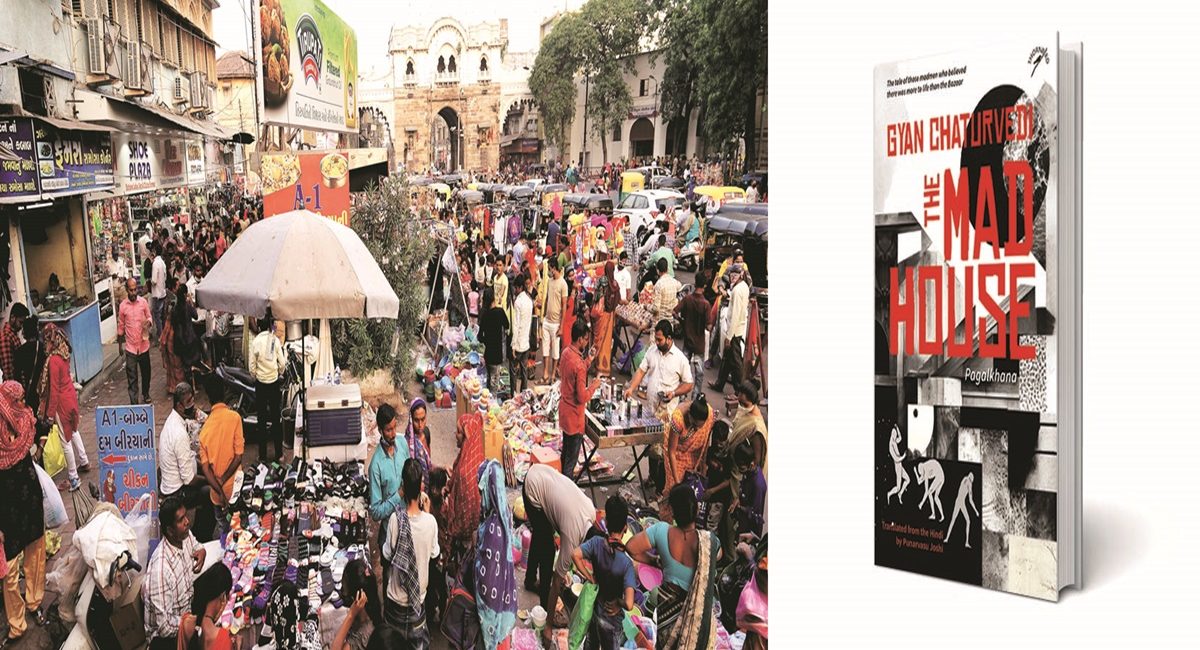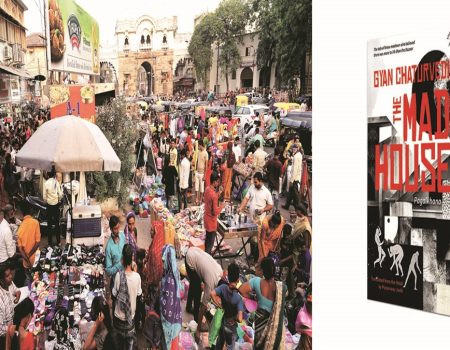Hindi writer Gyan Chaturvedi is known to his readers for the sharpness of his satire that negotiates the ever deepening faultlines in society. In his 2020 novel, Pagalkhana, now available in English translation as The Mad House, the author extends his repertoire of irony and exaggeration to expose the ills of consumerism gnawing sanity away from the reach of common people. With the help of two main characters—one from a middle class family and the other who lives in a slum—Chaturvedi builds a commanding narrative of a pulsating desire to be free and unencumbered.
Consumerism as the new deity
The Mad House announces its literary ambitions at the beginning where the Bazaar is anointed as the ‘new God’. “A time came when thought and thinking, attire, clothes, emotions, love, smile, culture, art, music, literature, folk—everything moved according to the free market’s will,” says the accompanying line in a theme that recurs throughout the novel. The penetration of the market forces is soon revealed in the introduction of the protagonist, a member of the middle class, whose family seeks clinical intervention for his sleeplessness. It emerges that the man has been digging a tunnel to find his dreams that had suddenly disappeared.
Meanwhile, the slum dweller, too, goes underground, to live in the sewage tunnels that he finds not different from his own surroundings above. As he descends into the manhole, he discovers ‘corpses’ of the other man’s dreams floating in the underworld. Chaturvedi goes on to paint an unenviable portrait of a world where its citizens are struggling to steer clear of the mess they find themselves in, both socially and economically. The author deftly employs the exaggerations of artistic possibilities to stretch the portrait, frame by frame.
Satire that spares no institution
The satire in The Mad House is endless. The flood consuming a city becomes the Bazaar’s “magnificent arrangement to sell goods at the doorstep”. The Bazaar also assumes the “first right to everything on the planet”. The government isn’t spared either. “The government knew the Bazaar was much more powerful than itself. It then decided that it would use the Bazaar’s power for its survival,” continues the novel. The Constitution is ‘in tatters’ as the Bazaar has “forced many amendments”. The ‘damage’ to the citizens include ‘emptiness in eyes’, ‘lack of dreams’ and ‘disappearance of time’.
The man who has lost his footing, however, is astonished to discover he could recall the numbers of all his documents, from Aadhaar to PAN, but not “his own name”. He now begins his search for a lock that could keep the government’s ‘bulldozers’ away from his home. “No lock can stop the fear,” offers a salesman. “Every lock fails in comparison to the key of amendments in the Constitution,” he adds. The struggles of the novel’s protagonists weigh against the efforts of the Bazaar, which by now wants people to “stop thinking altogether” because “the most dangerous thing is that a man can think”. The power of the Bazaar is soon tested by the growing number of citizens who are “digging tunnels to escape”.
The Mad House, another of Chaturvedi’s works that delves into social crises, like his 1999 novel Baramasi, about the dreams of a struggling middle class family set in Bundelkhand region of Uttar Pradesh in the ’60s, mirrors the contemporary world’s deeply rooted inequalities. The author, a trained medical doctor, cuts through the muddy morass of indifference and inertia with incisive criticism.
Faizal Khan is a freelancer.
The Mad House: Pagalkhana
Gyan Chaturvedi
Translated from the Hindi by Punarvasu Joshi
Niyogi Books
Pp 48, Rs 595









No Comment! Be the first one.